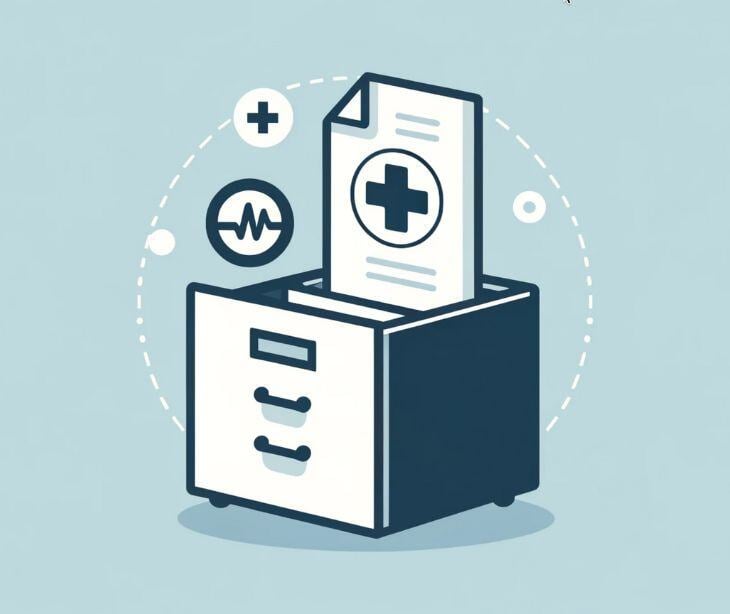4 min read
Data loss preventions techniques for healthcare organizations
Kirsten Peremore
March 07, 2024

The term "data loss" might initially seem straightforward, often conjured up images of data being deleted or destroyed. However, this definition barely scratches the surface. In reality, data loss encompasses a much broader spectrum of risks, including the potential for data breaches (which affect more than 21 million individuals). This makes it urgent to implement prevention techniques that address the full range of data loss scenarios.
The data losses and their consequences
Breach
A breach involving unauthorized access or disclosure happens when sensitive patient information is intentionally or unintentionally exposed to individuals without appropriate authorization. This can occur through hacking, employee negligence, or inadequate security measures.
Consequences include:
- Erosion of patient trust in healthcare providers.
- Legal actions and financial penalties under data protection laws.
- Mandatory notification expenses and damage control measures.
- Potential identity theft and financial fraud targeting affected patients.
Theft
Theft in healthcare refers to physically stealing devices containing patient data (like laptops or hard drives) or digital theft through cyber-attacks like phishing or malware. This often targets personal and financial information of patients. Consequences include:
- Direct loss of sensitive patient data leading to privacy violations.
- Costs associated with replacing stolen hardware and securing remaining data.
- Increased risk of identity theft and financial scams against patients.
Deletion
Deletion is the intentional or accidental removal of patient data from healthcare databases or systems. This could stem from human error, malicious intent, or flawed data management practices. Consequences include:
- Loss of medical histories that can affect patient care and treatment outcomes.
- Costs and time spent in attempts to recover the lost data.
- Disruption in healthcare operations and potential for medical errors.
Accidental destruction
Accidental destruction happens when patient data is lost due to hardware failure, software corruption, or natural disasters damaging data storage infrastructure. It's often unexpected and not malicious in nature.
Consequences include:
- Permanent loss of patient records, complicating diagnosis and treatment.
- Financial burdens related to data recovery efforts and system restoration.
- Operational disruptions in healthcare services during recovery period.
- Possible non-compliance with HIPAA and other data protection standards, leading to penalties.
See also: Data loss prevention in healthcare
The role of data loss prevention in HIPAA compliance
As healthcare organizations intensify their efforts to safeguard patient information amid rising data breaches, the demand for advanced data loss prevention solutions surges. This demand has resulted in the data loss prevention sector's increased value standing at $1.84 billion. These technologies cannot stand alone in the face of the threat. This brings into play the accompaniment of data loss prevention strategies, healthcare organizations directly respond to HIPAA's requirements. This includes meeting the standards for risk analysis and management (§164.308(a)(1)(ii)(A)), access controls (§164.312(a)(1)), and transmission security (§164.312(e)(1)), among others.
See also: Who needs to be HIPAA compliant?
Data loss prevention techniques
Customize DLP policies for healthcare data
DLP policies act as a layer of security in identifying, monitoring, and protecting data at rest, in use, and transit across an organization's network and devices. The effectiveness of DLP as a technique lies in the ability to tailor strategies to the unique needs and risks of an organization. What makes a good DLP policy:
- Defines what constitutes sensitive data.
- Tailors rules to the specific data protection needs of the organization.
- Includes provisions for both digital and physical data security.
- Specifies the actions to be taken when a policy violation is detected.
- Incorporates flexibility to adapt to evolving security threats and business needs.
- Ensures compliance with relevant data protection laws and regulations.
Integrate DLP with EHR systems
This process involves embedding DLP solutions directly within the EHR infrastructure to monitor, detect, and protect against unauthorized access and data breaches in real-time. This integration can be achieved by configuring DLP policies that align with the healthcare organization's data protection needs, ensuring that sensitive patient information within the EHR is continuously scanned for potential security violations. The DLP software works by identifying and classifying sensitive data, such as PHI, and applying predefined rules to prevent its unauthorized use or transmission.
Endpoint protection solutions
Endpoint protection solutions are security systems designed to prevent unauthorized access, attacks, and data breaches at the endpoint level, which includes laptops, desktops, mobile devices, and other network endpoints. These solutions typically incorporate a range of security measures such as antivirus, anti-malware, firewall policies, intrusion detection systems, and more, to detect and neutralize threats before they can compromise data. Endpoint protection solutions extend the reach of DLP strategies by adding layer of security that safeguards data directly at the source of access and use.
Network segmentation
Network segmentation divides the larger network into smaller, isolated segments or subnetworks. This strategic division improves security and control by limiting the access rights to sensitive information only to those segments where it's necessary, thereby minimizing the potential attack surface. In the event of a security breach, network segmentation contains the impact by preventing the spread of threats across the entire network, effectively isolating compromised segments, and protecting data stored elsewhere. It also simplifies the enforcement of DLP policies by allowing for a more targeted application of rules based on each segment's specific needs and risk profiles.
Secure communication platforms
Secure communication platforms, such as HIPAA compliant email software, ensure that all data transmitted across networks is encrypted and protected from unauthorized interception or access. These platforms implement robust encryption protocols and secure transmission methods, such as SSL/TLS, to safeguard the confidentiality and integrity of data as it moves from one point to another. Providing a secure channel for communication minimizes the risk of sensitive information being exposed during transit.
Data minimization
The data minimization principle reduces the volume of sensitive data at risk of exposure or unauthorized access. By limiting the amount of data stored, organizations decrease the potential impact of a data breach, as there is simply less information that could be compromised. Furthermore, data minimization aids in streamlining data management and security efforts, allowing for a more focused and effective application of security measures to the data that truly requires protection.
Data masking techniques
This involves altering, scrambling, or anonymizing specific data elements to protect private or confidential information from exposure. For instance, data masking can convert a real Social Security number into a plausible, but entirely fictional number, allowing developers or analysts to work with data sets without accessing actual sensitive information. By employing data masking, organizations can reduce the risk of data breaches as even if the data is accessed improperly, the masked information will not compromise the original data's confidentiality.
FAQs
What is data loss prevention?
Data Loss Prevention is a set of tools and processes used to ensure that sensitive information does not leave a corporate network unauthorized.
What is the biggest cause of data losses in healthcare?
The biggest cause of data losses in healthcare is human error, including accidental disclosures and mishandling of data.
When do I need to protect patient data?
Patient data needs to be protected at all times, from the moment it is collected until it is no longer needed and securely disposed of.
Subscribe to Paubox Weekly
Every Friday we'll bring you the most important news from Paubox. Our aim is to make you smarter, faster.




